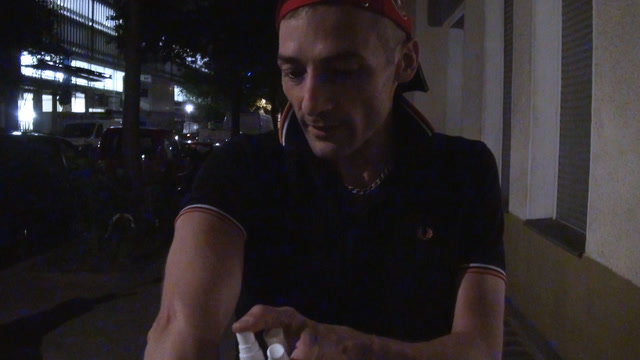Envisioning a perfumista0:54

Envisioning a perfumista0:54
Once, Christophe retrospectively envisions a persona who could wear his creation.
Perfumes are usually developed with a specific user in mind. Sometimes even stereotypes are used for briefing a perfumer. The former New York Times perfume critic Chandler Burr once even presented a parody of this type of briefing: «We want something for women. It should make them feel more feminine, but strong, and competent, but not too much…». Following Christophe’s work we hardly ever witnessed anything like this. Instead, it was the scent and its aesthetic quality that guided the design process.
Once, however, after the development of Blask had been completed for a while, Christophe retrospectively envisioned a persona who could wear this fragrance. Interestingly, his persona very much resembles the user, Mark Behnke, a well known perfume blogger, had in mind when reviewing this creation: «Blask is not a fragrance for everybody but if you are someone looking for a line that takes risks and challenges your perception of what perfume could be, Blask is something you need to try».
The title of this clip alludes to the growing enthusiasm for perfumes. A perfumista professes the culture of olfactory hedonism. Some perfumista might identify themselves as «fragraholics», «perfumaniacs» or «fragonerds» (just to mention a few labels popular within the subculture). A perfumista often wears an exotic fragrance that distinguishes itself from the middlebrow tastes of most people. One might think of Andy Warhol as a forerunner who once openly talked about his fondness for esoteric fragrances:
«Sometimes at parties I slip away to the bathroom just to see what colognes they’ve got. I never look at anything else— I don’t snoop—but I’m compulsive about seeing if there’s some obscure perfume I haven’t tried yet, or a good old favorite I haven’t smelled in a long time. If I see something interesting, I can’t stop myself from pouring it on. But then for the rest of the evening, I’m paranoid that the host or hostess will get a whiff of me and notice that I smell like somebody-they-know.»
Sometimes this passion for perfumery grows from an interest in chemistry and might rise to further practices. Some perfumista indulge in excessive perfume collecting. Others research for educational material, learn the basics of perfume creation and start as DIY perfumers. Another group of perfumista might start to write perfume reviews or publish related video content on youtube. All in all, they give rise to an increasingly discursive consumer culture. What started on the fringes eventually changes the rules of the game in the fragrance industry.






















